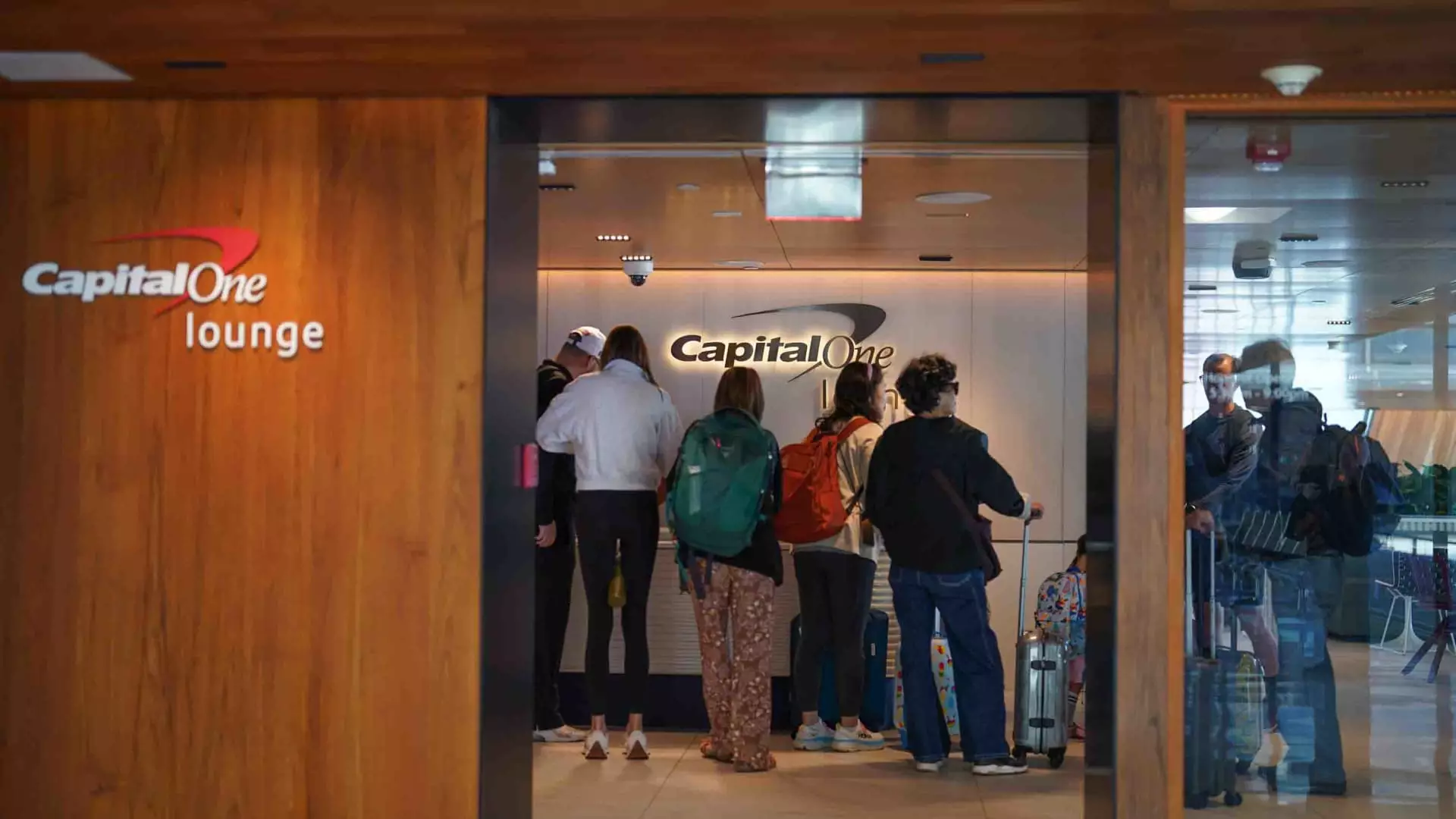As air travel becomes increasingly accessible, passengers are also seeking premium experiences that enhance their journey, and airport lounges have emerged as a favored retreat from the bustling terminals. Yet, the recent announcement by Capital One regarding its new lounge access restrictions signals a significant shift in how families enjoy these spaces. The decision to impose fees for guest access is not just a corporate strategy; it’s an indicator of a larger trend where exclusivity and comfort are becoming financial privileges, creating a divide between leisure travelers and those who can afford the escalating costs associated with premium services.
This is no trivial matter. Families traveling together, once able to enjoy the luxury of lounges as a group, now face added costs that could eclipse the price of their tickets. The $125 annual fee for additional cardholders may seem reasonable on the surface, yet it represents a departure from the inclusive access that many cardholders previously enjoyed. Combined with the additional charges for entry, the total can quickly balloon into a substantial sum, pushing airport lounge access further away from the average traveler.
The Real Impact of Overcrowding
The overcrowding issues that lounges now face are a direct consequence of their growing popularity; they have transformed into desirable sanctuaries amid chaotic airports. Capital One’s candid acknowledgment of this is refreshing but simultaneously disheartening. The notion that airport lounges are becoming “victims of their own success,” as industry analyst Henry Harteveldt states, encapsulates a sentiment that resonates with many travelers. The lounges, originally intended as serene spaces, now replicate the complexities of major airline terminals with lengthy waits and minimal available seating.
It raises the question of whether this premium access is truly a luxury when it comes at the cost of comfort and accessibility. The heavy spending criteria required for complimentary guest access further crystallizes this divide. With a staggering $75,000 annual expenditure threshold, only a tiny fraction of travelers can afford to enjoy lounges as they should be, effectively converting these spaces into the elitist cliques of frequent fliers.
The Competitive Landscape of Credit Card Companies
Capital One’s strategy, which mirrors American Express’s previous moves, demonstrates an industry-wide trend towards tightening lounge policies as a response to overcrowded facilities. This shift disrupts the original intent of these lounges, which was to offer a quiet, welcoming environment for travelers. If one can spend the requisite sums—especially in today’s economic climate where discretionary spending is under pressure—lounge access becomes yet another badge of status rather than a basic travel enhancement.
The competition among credit card issuers, each vying for dominance in the travel rewards arena, has led to this restrictive evolution. With lounges being central perks attached to high-fee cards, these issuers grapple with the challenge of balancing accessibility with maintaining an elite atmosphere. Unfortunately, this has resulted in corporate policies that cater to a high-spending demographic at the expense of average travelers looking for comfort during their journeys.
A Broader Reflection on Value and Privilege
Consider this: what’s the true value of access if it comes at such an inflated cost? The increasing gap between profitable privileges and everyday travel experiences lays bare fundamental issues around consumerism and access in society. More than just an inconvenience for families, these changes reflect a broader trend of commodifying experiences once viewed as communal.
Airports should be a space where travel seamlessly merges comfort with accessibility. When families are forced to weigh the benefits of spending beyond their means against their travel needs, we must question if we have collectively lost sight of what travel should embody—freedom and enjoyment rather than financial exclusion. Airport lounges, meant to enrich our travel experiences, are now becoming yet another reservation for the wealthy.
As we brace for future travels, we must advocate for a more balanced approach that does not penalize families and casual travelers striving for comfort in an increasingly commercialized flying experience. It’s imperative to remember that the joy of travel should never be solely a privilege of the affluent—it should be an accessible endeavor for all.

